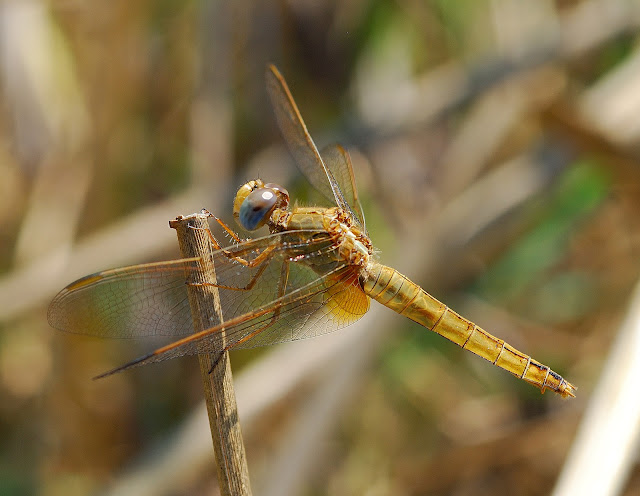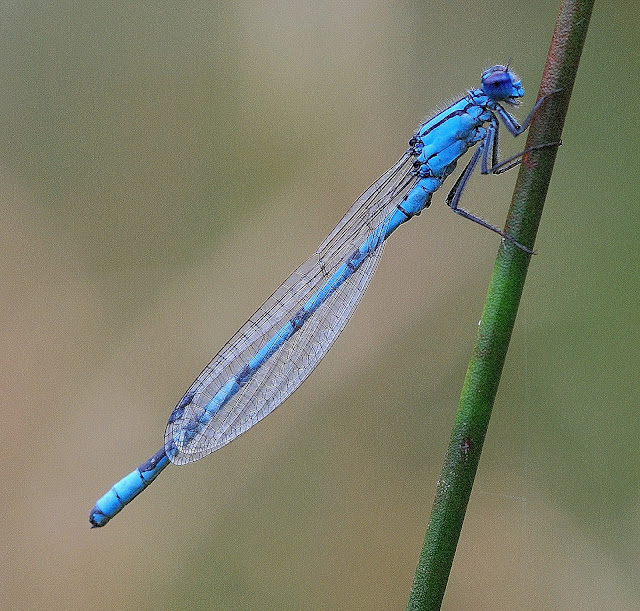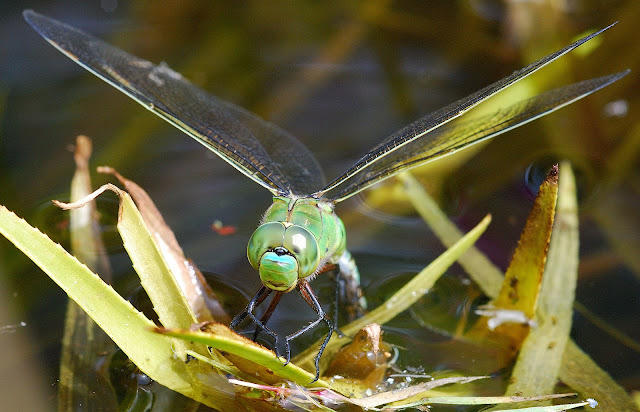The Large Red Damselfly is perhaps first to appear from our ponds in the spring.It provides a welcome dash of colour to otherwise sombre waters.
It is not only common on the Isle of Wight but widespread throughout the UK.Eggs are laid into submerged vegetation and hatch after several weeks.Normally the larvae develop over two years at the bottom of the watercourse and many emerge synchronously on spring days over a three week period.
It seems that this species has no hesitation in tackling prey its own size as seen here when this female took an immature Azure Damselfly in flight and proceeded to consume it.Males can also be very aggressive by driving off any other males and passing insects.





















































